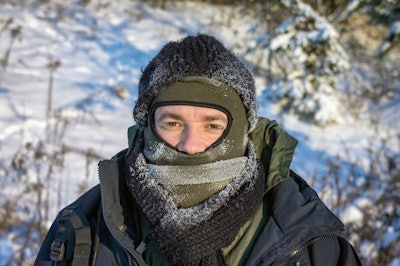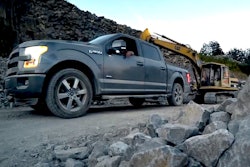
Cold stress occurs when the skin temperature is driven down and eventually the internal body temperature drops as well. When a person’s body cannot warm itself, cold-related injuries can occur. Three common forms of cold stress are hypothermia, frostbite, and trench foot.
The risk factors for cold stress can be increased by:
- Wetness/dampness, improper attire, and exhaustion
- Predisposed health conditions such as hypothyroidism and diabetes
- Poor physical conditioning
Extreme cold can vary in different regions and wind chill can cause heat to leave the body more rapidly. For example, if the air temperature is 40 degrees Fahrenheit and the wind speed is 35 mph, the wind chill temperature is 28 degrees F.
Although the Occupational Safety and Health Administration (OSHA) does not have a specific standard that covers working in cold environments, employers do have a duty to protect workers from hazards, including cold stress hazards, which can result in death or serious harm.
Hypothermia
Hypothermia occurs when the body’s temperature drops below 95 degrees F. An abnormally low body temperature is likely in very cold temperatures but can occur at temperatures above 40 degrees F if an individual is chilled from rain, sweat or immersed in cold water.
A mild symptom of hypothermia is uncontrollable shivering. As the body’s temperature continues to drop, confusion, slurred speech, slowed heart rate and breathing, and unconsciousness are moderate to severe symptoms. The victim will be unable to think clearly or move well.
If a co-worker appears to be suffering from hypothermia, call 911 and move the worker into a dry, warm area. Remove wet clothing and replace it with dry clothing. Layer the individual in blankets. If medical assistance is more than 30 minutes away, give them warm, sweetened drinks and place warm bottles in the armpits, groin, and sides of the chest.
If a person with hypothermia has no pulse or isn’t breathing, check for 60 seconds and then start rescue breaths for three minutes. Recheck for breathing and a pulse for 60 seconds before resuming rescue breathing. Only start chest compressions at the direction of the 911 operator or emergency medical services.
Frostbite
Frostbite is the freezing of skin and the tissues underneath. It can cause permanent damage and in severe cases can even call for amputation. It generally affects the extremities first as the body shifts blood flow from the hands and feet to keep the core warm.
The symptoms of frostbite are reddened skin that develops gray/white patches, numbness in the affected region and possible blisters.
If a co-worker is suffering from frostbite, follow the recommendations listed above for hypothermia. Do not rub the affected area, as this can cause more damage. Do not break blisters, and loosely cover the area and protect it from contact. Do not try to rewarm the area before seeking medical help.
If the area freezes again, more tissue damage will occur. If the individual is alert, give them warm sweetened drinks with no alcohol.
Trench foot
This type of injury is caused by prolonged exposure to cold and wet conditions. If the feet are constantly wet, it can happen in temperatures as high as 60 degrees F. Wet feet lose heat 25 times faster than dry feet.
Symptoms of trench foot include redness of the skin, swelling, numbness, and blisters. If a co-worker is suffering from trench foot, call 911 or seek medical assistance. Remove the shoes and wet socks and dry the feet. Keep the feet elevated and avoid walking.
In order to avoid these sorts of situations, you should:
- Train employees about cold-induced illnesses and injuries.
- Encourage employees to wear layers that can be adjusted to changing conditions.
- Monitor your workers’ physical conditions.
- Schedule frequent breaks in warm, dry areas.
- Schedule work during the warmest part of the day.
- Use the buddy system.
- Provide warm, sweet beverages.









